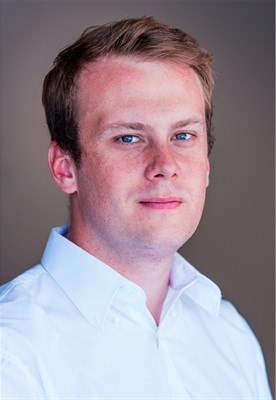
Subscribe & Follow
Nick Walker's master plan to cure HIV

Here, the innovation scientist himself tells us what sparked the idea, of the profound impact it could have across the globe and how he intends to take it to the next level.
 Comment on your experience of the GIC.
Comment on your experience of the GIC.
 Comment on your experience of the GIC.
Comment on your experience of the GIC.It was a very classy and slick evening. The venue, high above Sandton, was perfect for such an amazing occasion. I did my pitch last so I had a very tense evening, but it was worth every nail-biting moment in the end.
 What sparked the idea?
What sparked the idea?
 What sparked the idea?
What sparked the idea?The idea was inspired by an American man, Timothy Brown who was HIV-positive and developed leukaemia. Brown received a stem cell transplant from a donor who had a rare genetic mutation that made the stem cells immune to HIV/AIDS. As a result, Brown has not needed ARVs since. My interest in the pioneering research into gene editing for curing HIV/AIDS, currently underway around the world, led me to consider the next steps once this research results in a replicable therapy. This interest, combined with my experience in the industry of processing and storing umbilical cord blood, resulted in the idea of a large-scale bank with the necessary facilities to process and store the vast amount of stem cells that would make this potential treatment for HIV/AIDS feasible.
 What impact could it have if successful.
What impact could it have if successful.
 What impact could it have if successful.
What impact could it have if successful.The impact it would have is massive, a cure for HIV is one of the holy grails for any medical researcher. It would save millions of lives and positively influence the lives of billions.
 What is your plan of action at this stage?
What is your plan of action at this stage?
 What is your plan of action at this stage?
What is your plan of action at this stage?From early on in the programme, I realised that while my idea was technically feasible, it was largely impractical. The stem cell transplant procedure is extremely expensive with long hospital stays and is also reasonably dangerous. With the massive advancements that we have seen in anti-retroviral therapy, HIV is treated as more of a chronic condition that can be managed with drug adherence and healthy living. The risks and costs in the idea I proposed were just not justified. Instead, I teamed up with an amazing software developer from Argentina, named Agustina. Together, we identified that we could make a real difference in early diagnosis and link to care for HIV screening programmes. We developed Muzi, a way to improve diagnostics by making them smart. At this stage, we are actively seeking funding to get a pilot project and proof of concept running.
 Why are you passionate and, at the same time, hopeful about finding a cure for HIV in particular?
Why are you passionate and, at the same time, hopeful about finding a cure for HIV in particular?
 Why are you passionate and, at the same time, hopeful about finding a cure for HIV in particular?
Why are you passionate and, at the same time, hopeful about finding a cure for HIV in particular?I have seen first-hand the devastation that HIV can cause on a family and the negative impacts that it is having on the social and economic spheres in South Africa and the world. I see working towards a cure as a wonderful contribution to the world.















